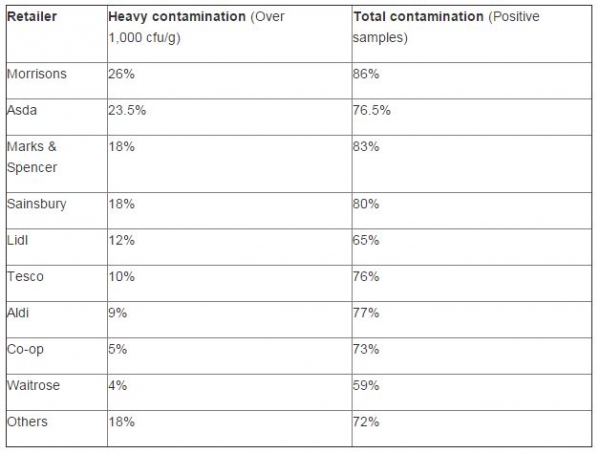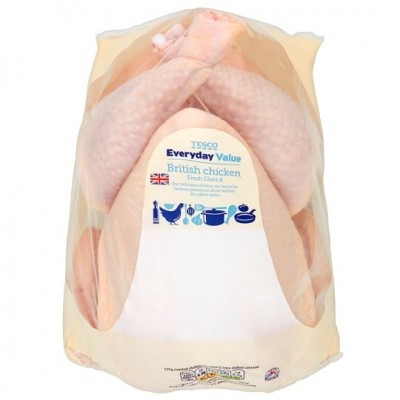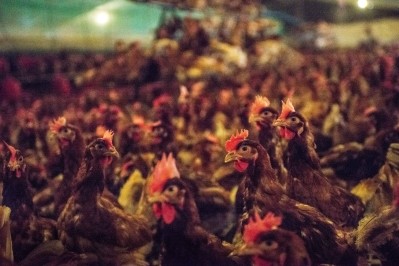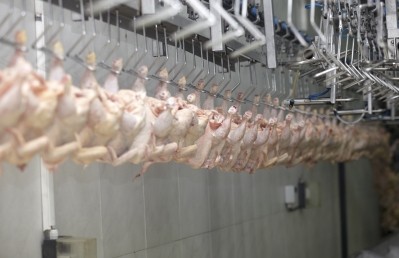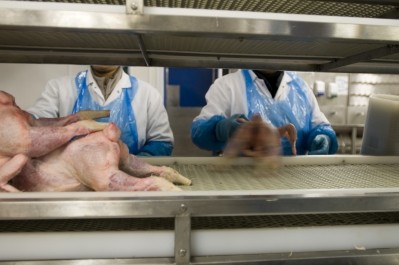Supermarkets ‘must step up to plate’ on campylobacter: Which?
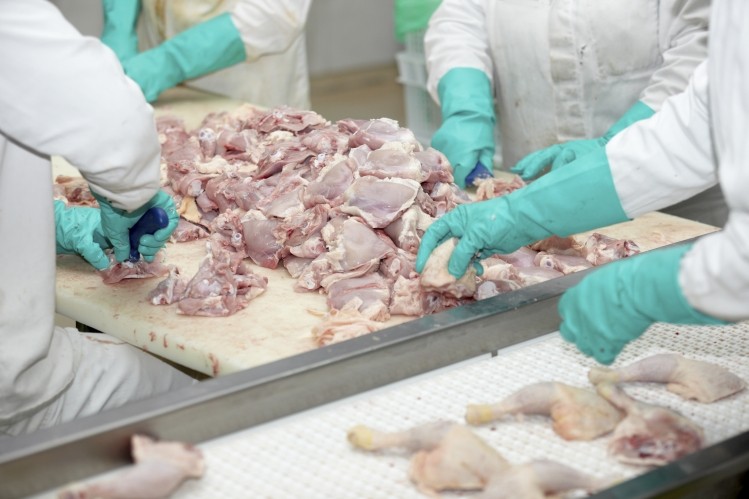
The call for action came after a Food Standards Agency (FSA) survey revealed that the level of high contamination was 15% in fresh shop-bought chickens between July and September 2015.
The industry was therefore “unlikely” to meet its goal of reducing the prevalence of the most contaminated chickens to 7% at retail by the end of 2015, according to an FSA spokesman.
Which? executive director Richard Lloyd responded to the results by calling on supermarkets to redouble efforts in the fight against Britain’s number one cause of food poisoning.
Survey at a glance
Target for end of 2015: 7%
Heavily contaminated chicken: 15%
Result from same period last year: 22%
“Some retailers have significantly reduced levels of campylobacter, so the pressure is on the others to explain why they have missed these jointly agreed targets,” Lloyd said.
‘Step up to the plate’
“The government and the FSA must ensure all supermarkets step up to the plate.”
The survey, published today (November 19), found that the level of heavily contaminated chicken was 15%, down from 22% between July and September 2014.
British Retail Consortium food and sustainability director Andrew Opie said: “We are pleased the investment by retailers and suppliers over the last few years is having an impact.
‘Further to go’
“We recognise there is further to go but are confident the investment in effective interventions combined with sharing of what works will continue to make a real difference in tackling this pernicious bug.”
The 7% retail target is lower than the 10% target for the end of the slaughter process because some foodborne pathogens ‘die-off’ through the chill chain.
As early as this summer, the FSA predicted that the 10% target would not be met by the industry as a whole despite welcome reports of progress.
A board paper, for a meeting in July, said: “If the target is not met by December 2015 then it is crucial that the deadline is rolled forward to enable the momentum to be maintained in the drive towards the agreed target and the public health benefits that would be consequently delivered.”
Fresh chicken is judged to be heavily contaminated if there are more than 1,000 colony forming units of campylobacter per gram (cfu/g).
This is the highest band of contamination, while two other bands correspond to less than 100 cfu/g and between 100 and 1,000 cfu/g.
